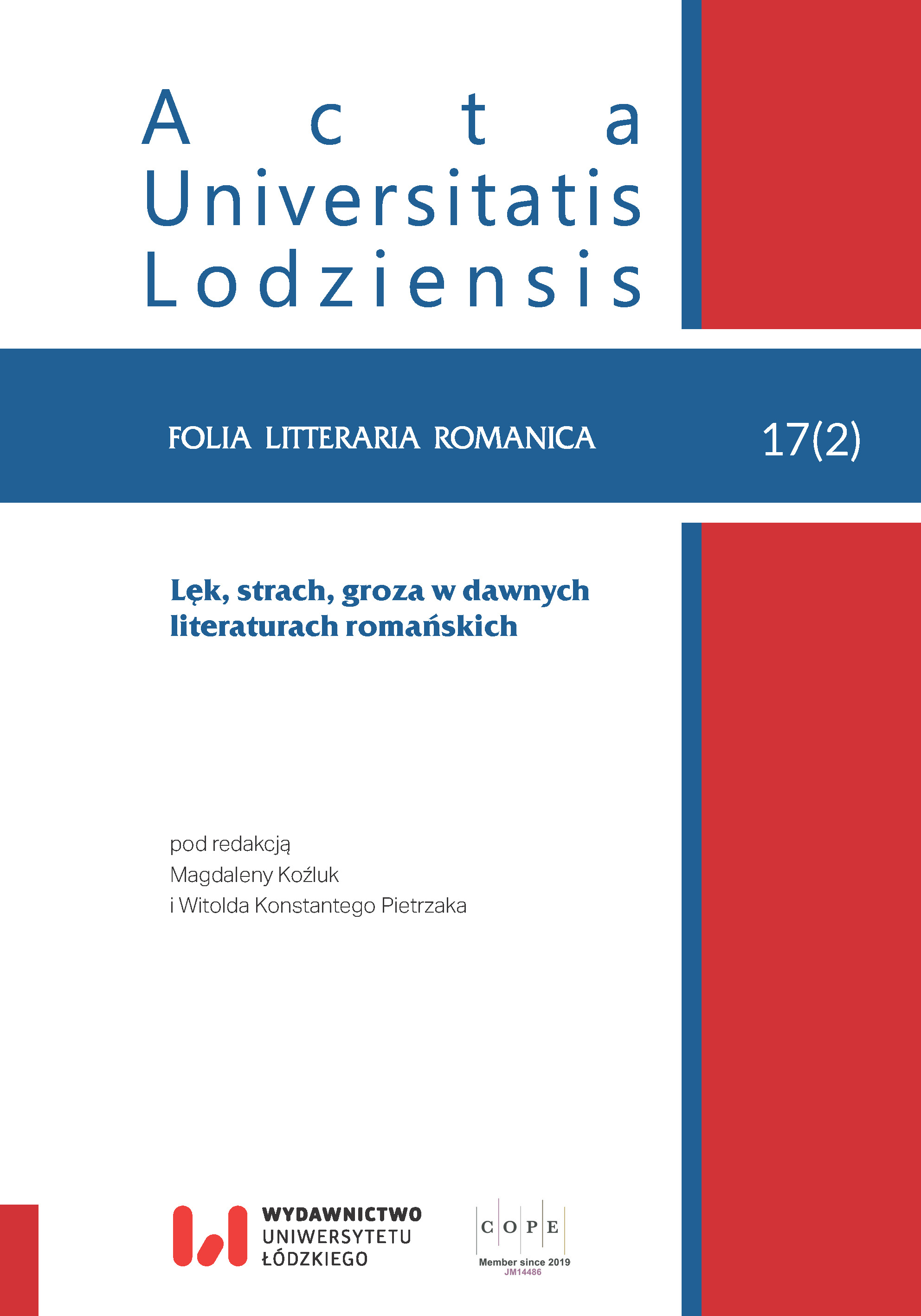What to Fear in Fairy Tales Without Ghosts and Monsters? Reflections on the French Literary Fairy Tale of the Late 17th Century
DOI:
https://doi.org/10.18778/1505-9065.17.2.14Keywords:
literary fairy tale, fairy, fear, Bernard, MuratAbstract
Between 1690 and 1715, the literary fairy tale, the conte de fées, becomes fashionable in France, created by the regulars of Parisian salons and distinct from the folktale. The monster in the modern fairy tale is ridiculed, so that the fear it is supposed to inspire is apparent (the example of the tales of Madame d’Aulnoy and de Murat). Then, in two fairy tales (Le prince rosier by Catherine Bernard and Anguillette by Mrs de Murat), I analyse fears and anxieties that are rooted in love rather than evil spells. The pessimistic vision of love links the fairy tale with the novel of the late 17th century. Both are meant to transport the reader to another, distant world in order to portray the real world all the better. Contes de fées create an atmosphere of spiritual anxiety that has no connection with the enchanted world: no supernatural powers change human nature and the misery it leads to, and the sophisticated form and magical setting hide the true face of the world of feelings.
Downloads
References
Aulnoy hrabina de, Marie-Catherine, le Jumel de Barneville, Contes des fées, suivis des Contes nouveaux ou Les Fées à la Mode, éd. Nadine Jasmin, introduction Raymonde Robert, Paris, Honoré Champion, 2004
Google Scholar
Barneville, le Jumel de, Marie-Catherine, hrabina d’Aulnoy, „Pełna Wdzięku i Percinet” (« Gracieuse et Percinet »), in Contes des fées, suivis des Contes nouveaux ou Les Fées à la Mode, éd. N. Jasmin, introduction R. Robert, Paris, Honoré Champion, 2004
Google Scholar
Bettelheim, Bruno, Psychanalyse des contes de fées, Paris, Robert Laffont, 1976
Google Scholar
Castel, abbé de Saint-Pierre, Charles-Iréné, « Projet pour perfectionner l’éducation », in Œuvres diverses de Monsieur l’Abbé de Saint-Pierre, Paris, Briasson, 1730, t. 1
Google Scholar
Delpy, Catherine. « ‘La Belle et la Bête’. La figure du monstre dans le conte de fées littéraire des XVIIe et XVIIIe siècles », in Le « monstre » humain : Imaginaire et société [en ligne], Aix-en-Provence, Presses universitaires de Provence, 2005, URL : https://doi.org/10.4000/books.pup.6837, dostęp 10.11.2021
Google Scholar
DOI: https://doi.org/10.4000/books.pup.6837
Joole Patrick, « La peur dans la littérature de jeunesse : le miroir aux fantasmes », Tdc, 2000, no 803
Google Scholar
Labuda, Aleksander Wit, Wróżki w salonach. Antologia francuskich baśni literackich z XVII i XVIII w., wybór, przekład i opracowanie A. W. Labuda, Oficyna Wydawnicza ATUT, Wrocław, 2020
Google Scholar
Murat, Henriette-Julie de Castelnau, comtesse de, Contes, éd. Geneviève Patard, Paris, Honoré Champion, Bibliothèque des Génies et des Fées 3, 2006
Google Scholar
Patard, Geneviève, « Mme de Murat et les Fées modernes », The Romanic Review, vol. 99, no 3-4, s. 275, URL : https://romanicreview.journals.cdrs.columbia.edu/wp-content/uploads/sites/16/2016/08/Patard_99_2.pdf, dostęp 12.11.2021
Google Scholar
Perrault, Charles, Contes, Paris, Pocket Classiques, 2006
Google Scholar
Raynard, Sophie, La Seconde préciosité. Floraison des conteuses de 1690 à 1756, Tübingen, Günter Narr Verlag, 2002
Google Scholar
Robert, Raymonde, Le Conte littéraire en France de la fin du XVIIe à la fin du XVIIIe siècle, [1982], nouvelle éd. z dodatkiem bibliograficznym, Nadine Jasmin, avec la collaboration de Claire Debru, Paris, Honoré Champion, 2002
Google Scholar
Rolland Annie, La peur, le chagrin et le jeune lecteur, 2012, URL: http://www.ricochet-jeunes.org/le-livre-en-analyse/article/334-la-peur,-le-chagrin-et-le-jeune-lecteur, dostęp 15.11.2021
Google Scholar
Sermain, Jean-Paul, Le Conte de fées du classicisme aux Lumières, Paris, Desjonquères, 2005
Google Scholar
Slany, Katarzyna, Groza w literaturze dziecięcej: od Grimmów do Gaimana, Wydawnictwo Naukowe Uniwersytetu Pedagogicznego w Krakowie, Kraków 2016, URL: https://rep.up.krakow.pl/xmlui/bitstream/handle/11716/3154/PM751--Groza-w-literaturze-dzieciecej--Slany.pdf?sequence=1&isAllowed=y, dostęp 16.11.2021
Google Scholar
Soriano, Marc, Guide de littérature enfantine, Paris, Flammarion, 1959
Google Scholar
Downloads
Published
Versions
- 2023-08-10 (2)
- 2022-12-30 (1)
How to Cite
Issue
Section
License

This work is licensed under a Creative Commons Attribution-NonCommercial-NoDerivatives 4.0 International License.













